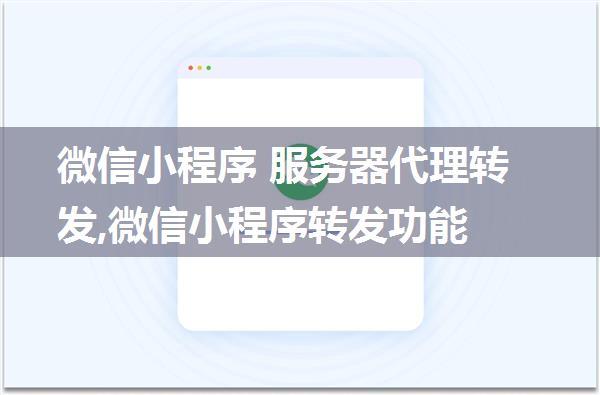
?? Implementing Share/Forward Functionality in WeChat Mini Program: A Comprehensive Guide ??As a developer, you may have encountered the need to implement share/forward functionality in your WeChat mini program. This feature allows users to share the current page with their friends or family members, which is a common requirement in many scenarios. In this guide, we will walk you through the process of implementing share/forward functionality in your WeChat mini program, including handling parameters and overcoming potential pitfalls.
Prerequisites
Before diving into the implementation details, make sure you have:
1. A basic understanding of WeChat mini program development.
2. Familiarity with WeChat's official documentation and guidelines for mini programs.
3. A WeChat mini program project set up in your preferred IDE (Integrated Development Environment).
Step1: Add a Share Button
To start, add a share button to your page using the following code:
```xml
```
This code creates a primary-level share button with an "open-type" attribute set to "share". This attribute tells WeChat that you want to handle sharing events.
Step2: Handle Share Events
Next, you need to handle the share event in your mini program. To do this, add the following code to your page's JavaScript file:
```javascriptPage({
onShareAppMessage(res) {
// Your custom logic here return {
title: '分享标题',
path: '/path/to/page', // Optional, defaults to current page imageUrl: ' // Optional, defaults to no image };
}
});
```
In this code:
* `onShareAppMessage` is the event handler for share events.
* The function takes a single argument `res`, which contains information about the sharing event (e.g., the user who shared the page).
* You can customize the sharing behavior by returning an object with the following properties:
+ `title`: The title of the shared page (optional, defaults to the current page's title).
+ `path`: The path of the shared page (optional, defaults to the current page's path).
+ `imageUrl`: The URL of the image associated with the shared page (optional, defaults to no image).
Step3: Handle Parameters
When sharing a page with parameters, you need to handle those parameters in your mini program. To do this, modify the `onShareAppMessage` function as follows:
```javascriptPage({
onShareAppMessage(res) {
const params = res.target.eventType === 'share' ? res.target.eventParam : {};
// Your custom logic here return {
title: '分享标题',
path: '/path/to/page', // Optional, defaults to current page imageUrl: ' // Optional, defaults to no image,
params: params };
}
});
```
In this code:
* We check if the sharing event is of type "share" and extract the parameters from the `eventParam` property.
* We then pass these parameters to your custom logic.
Step4: Customize Share Behavior
To customize the share behavior, you can modify the `onShareAppMessage` function as needed. For example:
* You can set a default title or path for shared pages.
* You can add custom logic to handle specific sharing scenarios (e.g., sharing a page with a specific parameter).
* You can use WeChat's official APIs to share content, such as images or videos.
Common Pitfalls and Workarounds
When implementing share/forward functionality in your WeChat mini program, you may encounter the following common pitfalls:
1. Parameter handling: Make sure to handle parameters correctly by checking the `eventType` property of the sharing event.
2. Page navigation: When sharing a page with parameters, ensure that you navigate to the correct page after sharing.
3. Image handling: Be mindful of image sizes and formats when sharing images from your mini program.
To overcome these pitfalls:
1. Use WeChat's official documentation and guidelines for mini programs as a reference.
2. Test your share/forward functionality thoroughly to ensure it works as expected.
3. Use debugging tools, such as the WeChat Mini Program Debugger, to identify and fix issues.
Conclusion
Implementing share/forward functionality in your WeChat mini program requires attention to detail and careful handling of parameters. By following this guide, you should be able to create a seamless sharing experience for your users. Remember to test your implementation thoroughly and use debugging tools as needed to overcome common pitfalls. Happy coding! ??




